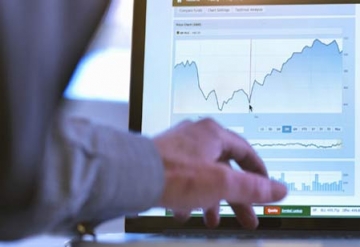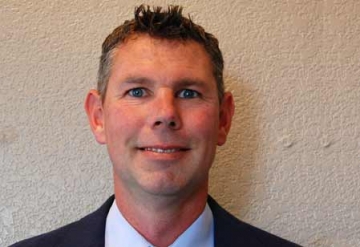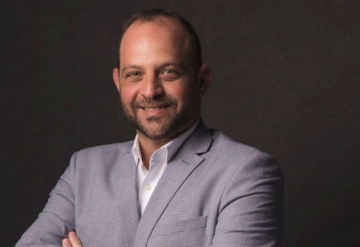THANK YOU FOR SUBSCRIBING

Overcoming Challenges in Construction with Behavioural Optimisation
Darren Selman, Associate Director of Health, Safety, and Wellbeing, [OTCMKTS: MACE]

 Darren Selman, Associate Director of Health, Safety, and Wellbeing, [OTCMKTS: MACE]
Darren Selman, Associate Director of Health, Safety, and Wellbeing, [OTCMKTS: MACE]What does a typical day look like as an associate director?
As an associate director in the industry, my day-to-day routine is far from typical. Each day presents different challenges and tasks that require my attention. However, there are certain activities that usually kick off my day, such as a morning meeting where we review progress on ongoing projects and discuss any concerns or issues that may have arisen. As part of my responsibilities, I also focus on health, safety, and wellbeing issues, so I make sure to keep abreast of any potential risks that need to be addressed.
After the initial meeting, my day could take a number of different directions. Sometimes, I attend various meetings with project managers or site managers, while other times, I prefer to spend time on-site to ensure that our work is being carried out safely and efficiently. Occasionally, we receive positive feedback, and I work with my team to implement those improvements across our various sites. On rare occasions, if there is an incident or near-miss, I prioritise that and investigate the issue to prevent it from happening again.
While I try to have a plan for the day, I often have to adjust my schedule to deal with whatever issues arise. In summary, my job as an associate director is dynamic, challenging, and rewarding, as I work to ensure that our projects are completed safely and that our people are well looked after.
What are the new challenges or trends that you notice in the construction industry?
From a health, safety, and wellbeing perspective, one of the biggest challenges in the construction industry is to change human behaviour and make people more safety-oriented. We want them to look out not only for themselves but also for their colleagues and anything that might present a risk. The challenge is to identify the new technologies that are available and work out which ones will be useful for us and how best we can use them.
One recent technology we have started using is Microsoft Forms through a QR code to get people to report unsafe acts, unsafe conditions, good practices, and hazards. We want to spot accidents before they happen and manage safety through leading indicators. Using this technology makes it easy for people to report safety issues quickly and easily, without any obstacles. It also provides us with good analytics to see where we are doing well and where to improve.
Another technology that we are using is GPS ringfencing systems. These allow our managers and supervisors on-site to configure custom roles, trigger alerts or warnings, and keep our people in the safest parts of our sites. Once we identify the unsafe areas, we can put in different protection and deliver different briefings.
We are always exploring new technologies and identifying which ones will work for us. We want to work with developers to help them develop technologies that will enhance our approach to safety.
Froma challenge perspective, we also try to get the inductions right at the beginning. We are exploring the use of virtual reality and augmented reality to immerse operatives in a working environment where they can understand the risks, point out the risks, and see what the issues are without putting them at any risk.
Is there any particular technology that you’re optimistic about going forward?
Two technologies that I am optimistic about for the future of the construction industry are augmented reality and geofencing.
"We are always exploring new technologies and identifying which ones will work for us. We want to work with developers to help them develop technologies that will enhance our approach to safety"
Augmented reality is set to become a common technology in the construction industry. Traditional safety inductions involving PowerPoint presentations often fail to effectively engage workers and convey the importance of safety.
To address this issue, we are exploring the use of live-action and interactive inductions, as well as virtual and augmented reality. This immersive technology will enable workers to experience a simulated working environment and gain a better understanding of the risks involved. They will also point out potential hazards without actually being exposed to danger. By creating a realistic experience, we can foster a culture of safety and promote genuine engagement with the topic, which is not possible through traditional presentations.
Geofencing technology is expected to have a significant impact on the construction industry. With various obstacles and hazards on construction sites, geofencing technology can prevent people from entering risky areas, such as railway lines, water bodies, and abandoned mines. It provides an additional layer of safety by alerting workers to potential dangers that may not be visible to the naked eye. We are excited about the rapid development and increasing practicality of these new technologies, which are becoming increasingly essential for ensuring the safety of our workers.
Can you please tell us about a positive change brought upon by a recent project in your organisation?
Mace is currently involved in multiple nuclear power generation projects to support the country’s transition from fossil fuels to electricity.
We are facing power-related challenges at present, and with the move towards electric vehicles by 2030, it is critical that we have the necessary infrastructure in place to support this shift. At Mace, we are actively involved in putting in place the required infrastructure and ensuring that Britain is prepared for the next chapter of electricity-driven transportation. In terms of innovations that I have introduced to the business, I am particularly focused on three key technologies: augmented reality, GPS geofencing, and the use of easily available technology for producing forms for leading indicator reporting. Recently, I have introduced the use of QR codes, which, although simple, have not been widely embraced across the construction industry. I have worked to explain to our people how it works and what the benefits are, driving a culture of “you said, we did” to encourage feedback and suggestions from the workforce.
While technology is essential, I believe engaging with the workforce and creating a culture of openness and feedback is even more critical. At Mace, we have “OEI tools,” which stand for observe, engage, and improve. Senior leaders must go across our sites, carry out observation tours, and engage with the workforce, understanding their issues and improving upon them. This underpins our values and ensures that we understandwhat’s happening across our sites and what we can do to deliver improvements.
Traditionally, safety has been driven by identifying what went wrong and how to change it. However, we have a significant focus on identifying and sharing good and best practices to promote positive safety outcomes. We use whatever tools are available to us, whether through human engagement and feedback or new technologies. Safety is a positive thing, and our ultimate goal is to ensure that people go home from work safely at the end of the day. We strive to change behaviour, remove complacency, and create a safety culture across our projects.
What is your advice for other senior leaders working in the industry?
I would suggest a simple but effective approach to improving safety on construction sites. It starts with talking to your people, understanding their concerns, and utilising their knowledge and ideas. The people already present at the construction site have first-hand experience withwhat’s going on and can provide valuable feedback. It’s important to value their opinions and work with them to develop and deliver improvements. Safety should not just be about ticking boxes and following procedures. It should be about truly understanding and addressing the risks and hazards in the work environment.
Read Also
Development of the Logistics Warehousing Market in Brazil
Driving Innovation and Preserving Tradition
Operational Leadership VS Field Leadership in the Utility Construction Business
People-First Innovation: Developing Virtual Design and Construction (VDC) Training Programs to Empower Field Team Members
Sustainable Projects: Aligning Business and Purpose in Latin America
Engage Smarter: Why Constraints Matter More Than Hazards

 Copyright © 2025 All Rights Reserved | by:
Copyright © 2025 All Rights Reserved | by: Construction Tech Review
| Subscribe | About us | Sitemap| Editorial Policy| Feedback Policy














